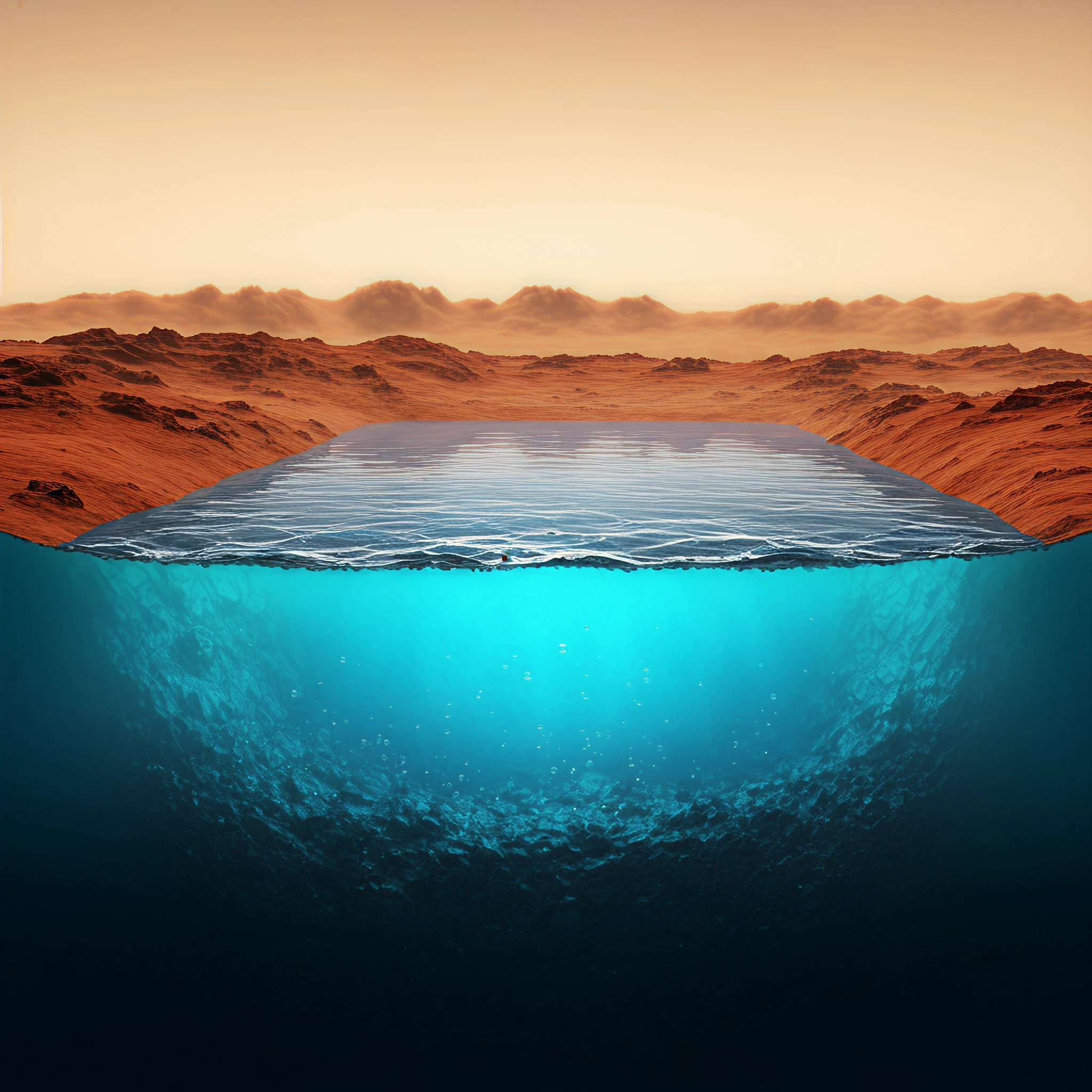For years, scientists have puzzled over a critical Martian mystery. Traces of ancient rivers, lakes, and even oceans are scattered across the Red Planet, but today, Mars stands as a primarily barren desert. Where did all the water go? New research may be inching us closer to an answer. Evidence suggests that vast amounts of water could be locked beneath the planet’s surface, hidden in a subterranean aquifer system.
The implications of this discovery go far beyond satisfying curiosity. If Mars truly holds significant underground reservoirs of liquid water, it could revolutionize our understanding of the planet’s history, reshape plans for human exploration, and provide valuable insights into life beyond Earth.
The Mystery of Mars’ “Missing” Water
Billions of years ago, Mars wasn’t the cold, arid world we see today. During the planet’s Noachian and Hesperian periods (4.1–3 billion years ago), it likely featured flowing rivers, immense lakes, and oceans. But as Mars lost its magnetic field and its atmosphere thinned, much of the surface water disappeared.
Some water escaped into space over time, some froze into the planetary poles, and some became trapped in minerals. But not all the water’s disappearance is accounted for. It is hypothesized that a significant amount may have seeped underground, forming aquifers shielded from the freezing surface conditions.
Recent seismic data from NASA’s InSight Mission offers new support for this theory.
New Evidence of Underground Water
NASA’s InSight Lander touched down on Mars in 2018 with a cutting-edge seismometer designed to “listen” to the activity beneath the planet’s crust. Scientists recently analyzed seismic waves from meteorite impacts and marsquakes recorded by the lander. Their findings uncovered an intriguing anomaly.
Between 5.4 and 8 kilometers beneath the surface, seismic waves slowed down significantly, a phenomenon typically caused by porous rock saturated with liquid. This subsurface area has been dubbed a “low-velocity layer,” and researchers believe it may hold enough liquid water to fill an ocean between 520 to 780 meters deep.
Essentially, this underground zone acts like a massive Martian sponge, holding liquid water in similar ways to aquifers on Earth. If confirmed, this hidden reservoir could account for Mars’ “missing” water.
The Role of Mars’ Ancient Meteor Impacts
One explanation for the existence of these aquifers lies in Mars’ violent history. Billions of years ago, the Noachian period saw the planet pummeled by meteors. These impacts fractured the crust, potentially creating pathways for surface water to seep deep underground. At these depths, the planet’s geothermal heat would prevent water from freezing, keeping it in a liquid state over billions of years.
Such underground reservoirs might not be limited to the equatorial region where the seismic anomalies were detected. If aquifers exist elsewhere, Mars may hold far more water than previously imagined.
Why This Discovery Matters
The possible existence of liquid water beneath Mars’ surface is monumental for three reasons:
1. Implications for Life
Liquid water is essential for life as we know it. On Earth, microbial life thrives in extreme underground environments, including in aquifers deep within the crust. Could similar life, perhaps descendants of ancient Martian ecosystems, persist beneath Mars’ surface?
While these water reservoirs may not guarantee the presence of life, they represent the best opportunity yet to search for evidence of microbial activity on the planet.
2. Sustainability for Future Missions
For future manned missions to Mars, subsurface water could be a game-changer. Purified, it could supply drinking water and oxygen for astronauts, while also being converted into hydrogen for fuel. By sourcing water locally, missions could significantly reduce the need to carry costly supplies from Earth, making Martian colonization more feasible.
3. Clues to Mars’ History
Understanding where Mars’ ancient water ended up can help scientists piece together the planet’s geological and atmospheric history. This, in turn, provides vital information about why Mars transitioned from a potentially habitable world to the desolate environment we see today.
Challenges to Accessing Martian Water
While the discovery is brimming with potential, accessing water located 5–8 kilometers beneath the planet’s surface is no small task. Currently, no technology exists to drill such depths on another planet. Even reaching this water would require advanced drilling equipment, robust power sources, and innovative excavation methods.
Additionally, scientific protocols to avoid contaminating these reservoirs with Earth-based microbes will be critical. Protecting potential Martian ecosystems from human interference will be a top priority, considering the ethical and scientific consequences.
What’s Next in Martian Exploration?
This discovery is just the tip of the iceberg in understanding Mars’ subsurface. Future missions could play a significant role in mapping the extent of these underground aquifers and probing them for water’s chemical composition or potential biosignatures.
Several key developments could help us uncover more:
- Advanced Seismometers on future missions will help detect water layers across different regions of Mars.
- Autonomous Drilling Technology may be one of the primary tools to access aquifers in the harsh Martian environment.
- Rovers with Ground Radar could build more detailed maps of underground water zones before drilling missions even begin.
Additionally, untouched zones like Utopia Planitia, where icy mud reservoirs are believed to exist, provide promising sites for future exploration.
A Watershed Moment for Mars Exploration
If proven, Mars’ hidden aquifer systems could transform not only our understanding of the planet but humanity’s relationship with it. From exploring the question of extraterrestrial life to enabling sustainable human missions, the value of this discovery cannot be overstated.
For now, the scientific community will continue relying on tools like seismometers and data analysis to decode the Red Planet’s secrets. The lesson is clear, though. Mars has much more to offer than meets the eye, and this discovery takes us one step closer to understanding its mysteries.








